- Author Jason Gerald [email protected].
- Public 2023-12-16 10:50.
- Last modified 2025-01-23 12:04.
Pranayama (commonly abbreviated as pranayam) is a breathing technique to regulate the flow of life energy (prana) throughout the body. Pranayama is beneficial for calming the mind, focusing attention, and relaxing the body. This exercise can be done alone or while (before, during, after) practicing yoga postures commonly called asanas. There are various pranayama (breathing) techniques with different benefits, such as reducing stress, increasing energy, calming the mind, or channeling negative energy.
Step
Method 1 of 5: Practice Dirga Breath (Breath of 3 Body Parts) to Reduce Stress
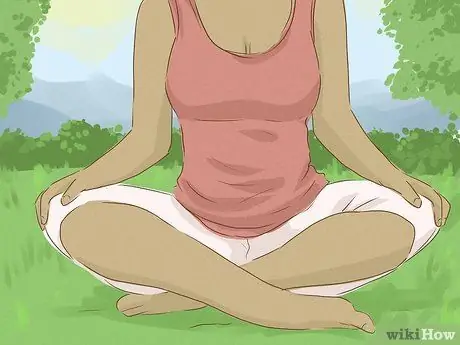
Step 1. Begin the exercise to find a comfortable sitting position or lying down
Before practicing pranayama, prepare yourself by sitting cross-legged on the floor while straightening your body and pulling your shoulders back. If you feel uncomfortable, sit on a yoga block or in a chair with your feet on the floor. You can also lie on your back on the floor on a yoga mat or blanket.
If you're practicing while sitting, imagine that your sitting bones (the lower part of your pelvic bone that you feel in your buttocks when you sit on your fingers) are pressed against the floor or seat. If you are lying down, imagine that the entire back of your body is submerged into the earth's surface. This imagination allows you to experience physical and mental calm so that you are able to focus solely on your breath
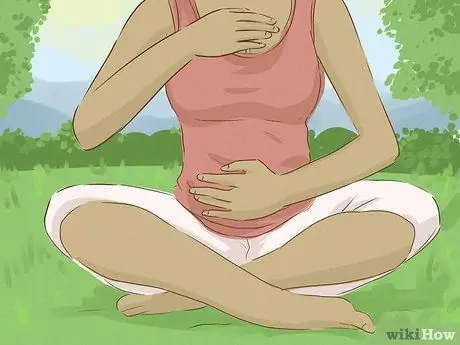
Step 2. Place your left palm on your stomach and your right palm on your chest
Place the left palm on the stomach slightly below the navel and the palm on the chest 3-4 cm below the collarbone. You simply put your palms relaxed without being pressed.
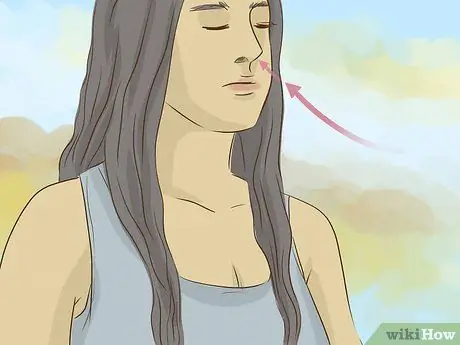
Step 3. Inhale through your nose and then exhale while expanding your lower abdomen, upper abdomen, and chest
As you inhale, use your palms to feel the diaphragm stretch so that your lower abdomen expands. Then, feel your upper abdomen expand as your lungs fill with air. Finally, feel the chest cavity expand. Watch your abdominal and chest muscles move up as you inhale.
To make it easier, inhale while visualizing each body part (lower abdomen, upper abdomen, chest) expanding one by one
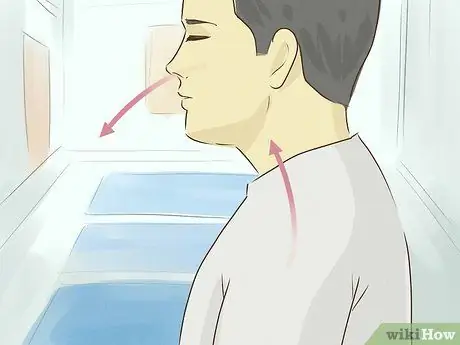
Step 4. Exhale while exhaling through the nose starting from the chest, upper abdomen, then lower abdomen
While exhaling, let the collarbone go down slowly and relax again followed by the upper and lower abdomen. Similar to the steps above, use your palms to feel the changes that occur as each part of the body slowly deflates.
So that you inhale and exhale for the same duration, inhale for a count of 4 and exhale for a count of 4
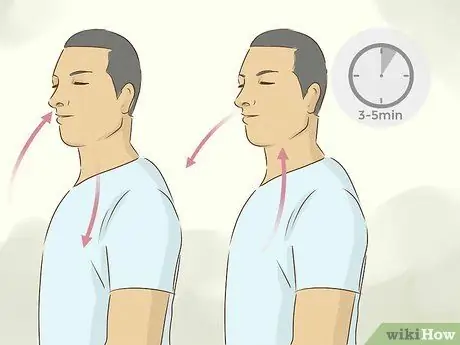
Step 5. Practice inhaling and exhaling according to the instructions above for 3-5 minutes
Keep breathing for 3-5 minutes by inhaling while expanding the lower abdomen, upper abdomen, chest and then exhale while contracting the chest, upper abdomen, lower abdomen. If the mind is distracted, let it pass by itself, then focus your attention on the breath again.
If you don't have time to practice for 3-5 minutes, you can still do dirga pranayam to reduce stress. Every morning when you wake up or when you face a problem, close your eyes for a moment to do Dirga Pranayam for a few breaths
Method 2 of 5: Practice Ujjayi Breath (Ocean Breath) to Increase Energy and Balance
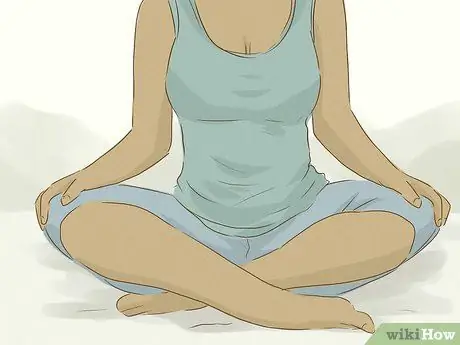
Step 1. Sit in a comfortable posture
Prepare for the exercise by sitting cross-legged on the floor while straightening your body and relaxing your shoulders away from your ears. If you feel uncomfortable sitting cross-legged on the floor, sit on a yoga block or in a chair. If needed, you may lie on your back on the floor.
- For those of you who have never practiced ujjayi breathing, start the exercise by positioning your body as comfortably as possible so that you can focus on your breath, not your body.
- After understanding the basic ujjayi breathing pattern, apply it while practicing hatha yoga to increase energy, balance and ability to concentrate.
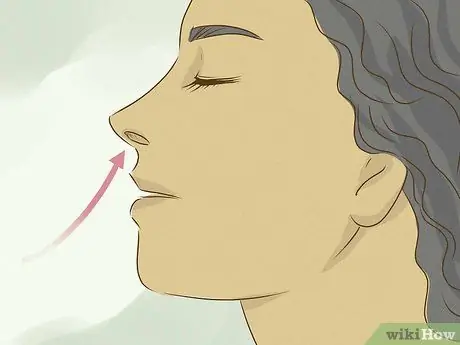
Step 2. Inhale slowly through your nose
Close your lips so that you inhale only through your nose. Inhale deeply longer than usual until the lungs are completely filled with air. As you inhale, direct the air toward the back of your throat so that you feel like you're hissing.
- When breathing ujjayi, the sound of breathing is like the sound of waves flowing back into the middle of the sea after the waves crash on the beach.
- Inhale and exhale while counting to determine the duration of the breath. While you can breathe as long as you want, start the practice by breathing in for a count of 4-5. Make sure you inhale and exhale at the same length as you practice.
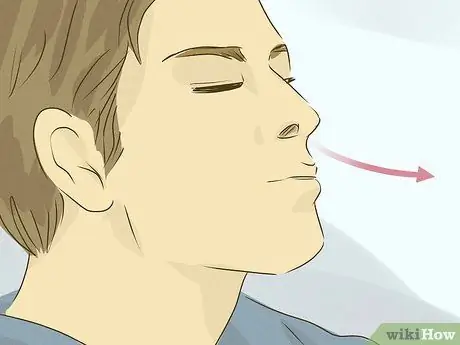
Step 3. Exhale slowly through your nose while narrowing your throat
Exhale through your nose while closing your lips and narrowing your throat as if you were whispering, but not so tight that you can't breathe. When exhaling, try to make the sound of your breath sound like the sound of ocean waves flowing toward the beach.
- If you're having trouble making the sound of the waves crashing when you breathe ujjayi, open your mouth and make a "haaaaah" sound like you're trying to fog up a mirror by blowing air out of your mouth. Then, close your lips and blow the air through your nose while making the same sound.
- Many people say that the sound of ujjayi's breathing is similar to that of Darth Vader in the Star Wars films.
- Make sure the inhale is the same length as the exhale. During the practice, you need to do the math so that the inhalation and exhalation are always the same length.
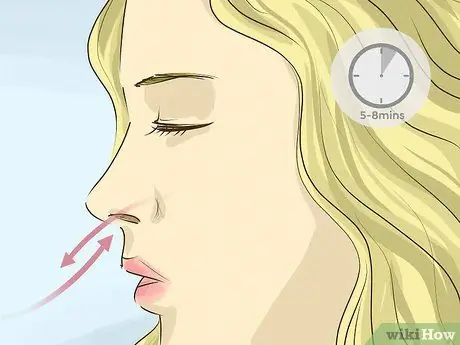
Step 4. Continue practicing by inhaling and exhaling for 5-8 minutes
Once you understand how, you can practice longer, up to 10 or 15 minutes. If you feel dizzy or short of breath, stop the exercise immediately and breathe normally.
The ujjayi breath helps you calm down if you are feeling nervous or restless
Method 3 of 5: Practice Breathing Nadi Shodhana (Breathing through One Nostril Alternately) to Calm the Mind
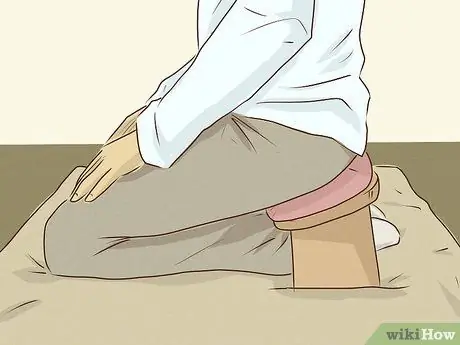
Step 1. Start practicing by finding a comfortable sitting position and placing your palms on your thighs
You can sit cross-legged on the floor while straightening your body and pulling your shoulders back. If you feel uncomfortable, sit on a yoga block, bench, or chair. Make sure you can sit with your back straight while pulling your shoulders back so you don't slouch.
Place your left palm on your left thigh or knee. You can bring the tips of your index finger and left thumb together in an "okay" gesture if it feels comfortable or keep your palms open
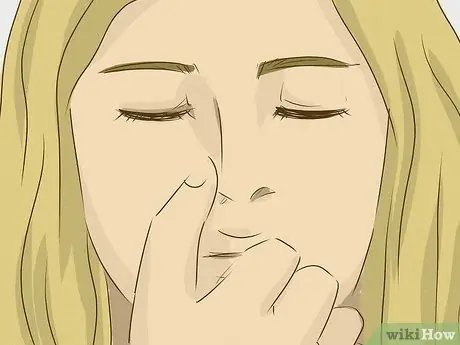
Step 2. Close the right nostril with the right thumb
Touch the tips of your right index and middle fingers on your forehead (between your eyebrows) or bend them and touch the knuckle of your index finger under your nose.
Place the inside of the right thumb in the curve of the nostril just at the tip of the nasal bone. This method makes the airways closed without pressing the nostrils firmly
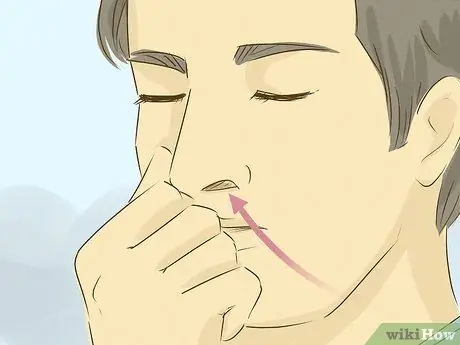
Step 3. Inhale through the left nostril
Inhale slowly and steadily through your left nostril for a count of 4 or 5 to make sure you inhale and exhale for the same duration. You can take longer breaths if you are used to pranayama.
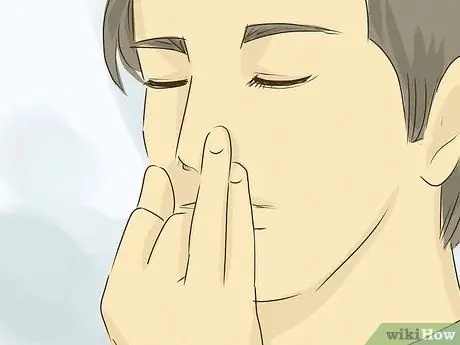
Step 4. Close the left nostril with the right ring finger
After inhaling for a count of 4 or 5, use the inside of the right ring finger to close the left nostril so that both nostrils are tightly closed. You can hold your breath for a moment, but not for more than 1 second. Remove the right thumb from the right nostril so that only the left nostril is covered.
If you touch the knuckle of your index finger under your nose, it's usually easier to bend your ring and little fingers. Choose the way you like, but focus on the breath, not the fingers
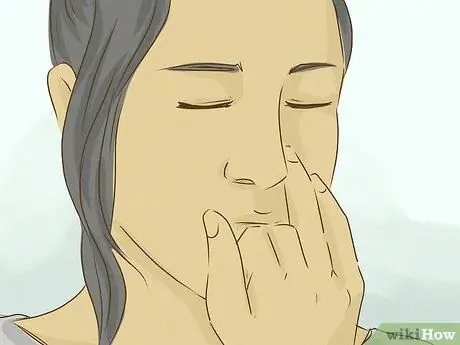
Step 5. Exhale and inhale through the right nostril
After exhaling through the right nostril, hold the breath for a moment, then inhale through the right nostril without changing the position of the hand.
Make sure you exhale as long as you inhale. For that, get used to breathing while counting to 4 or 5
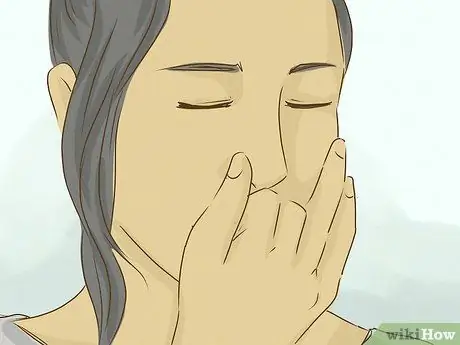
Step 6. Change the position of the hand to close the right nostril then exhale through the left nostril
Close the right nostril with light pressure, open the left nostril, then exhale slowly through the left nostril for a count of 4 or 5. By now, you have completed 1 round of nadi shodhana pranayam.

Step 7. Perform this exercise 3-5 breaths before returning to breathing normally
Each breath cycle begins by inhaling through the left nostril according to the steps described above. Focus your mind on the flow of your breath and the sound of your breath.
So that the inhalation and exhalation are the same length, keep counting to 4 or 5 each time you inhale or exhale
Method 4 of 5: Practice Kapalabhati Breath (Shining Head Breath) to Detoxify
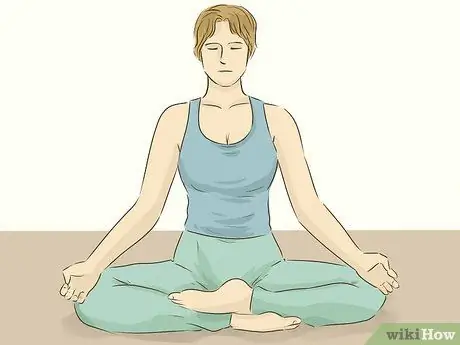
Step 1. Sit as comfortably as possible while breathing deeply to prepare yourself
Try sitting cross-legged on the floor. If it's not comfortable, sit on a yoga block or in a chair. During the exercise, make sure you sit with your body straight while pulling your shoulders back.
- Kapalabhati breathing exercises should be done while sitting, rather than lying down.
- Some pranayama practitioners prefer to close their eyes while practicing in order to focus on the breath.
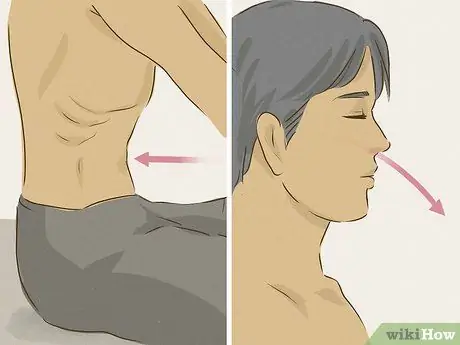
Step 2. Contract your lower abdominal muscles so that you can exhale in short, jerking breaths
While pulling the abdominal muscles inward, exhale the air from the lungs by taking continuous, firm breaths. It's a good idea to place your palms on your lower abdomen to make sure you're activating the right muscles as you exhale. The stomach wall is like being sucked in quickly every time you jerk.
- Do not use the chest, shoulder, neck, or facial muscles when practicing Kapalabhati breathing.
- If you have trouble activating your lower abdominal muscles, place your palms on your lower abdomen and press gently repeatedly, but quickly.
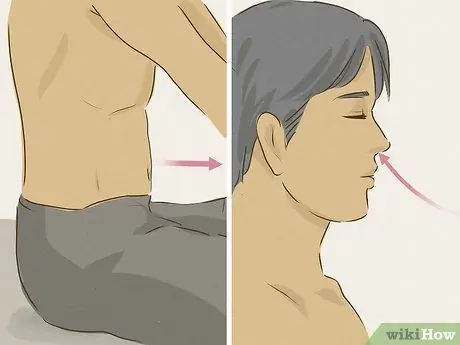
Step 3. Release the contraction of your lower abdominal muscles as you inhale so you can breathe normally
After expelling the air from the lungs while contracting the lower abdominal muscles, immediately relax the muscles. This will allow you to breathe normally to get air into your lungs and recover after exhaling while exhaling repeatedly. Contrary to the way you exhale, inhale slowly, calmly and relaxed.
During the practice of breathing Kapalabhati, inhale through your nose while closing your lips

Step 4. Perform this exercise 11 breaths before returning to normal breathing
If you're just starting out, set your breath rhythm by doing 1 breath every 1-2 seconds. If you have practiced often, you can speed up the rhythm of your breath to 2 breaths per second.
- If you feel nauseous, dizzy, or experience cramps in your waist while practicing Kapalabhati, stop practicing and breathe normally for 1-2 minutes.
- Usually, this exercise consists of 3 sets of 11 breaths each, but there is no need to go up to 3 sets if needed.
Method 5 of 5: Practice Simhasana Breath (Lion Breath) to Release Negative Energy
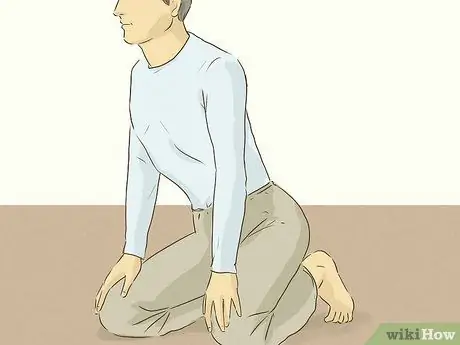
Step 1. Sit cross-legged on the floor
Before sitting down, place a small pillow, folded blanket, or yoga mat as a base. If it feels comfortable, cross your ankles (so that the soles of the feet point to the side). Change the sitting position if sitting cross-legged does not feel comfortable.
Place your palms on your knees with your fingers pointing to the sides
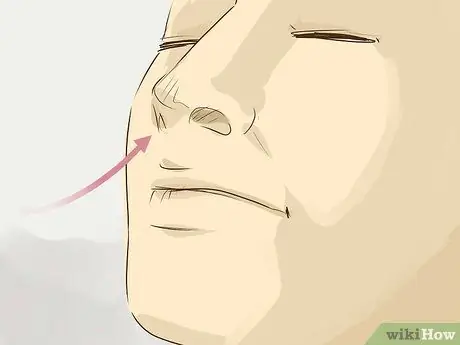
Step 2. Take a deep breath through your nose
Inhale as long as possible through your nose until your lungs can no longer fill with air. As you inhale, straighten your back and head while pulling your shoulders back to allow your lungs to expand as much as possible.
Inhale while closing your eyes
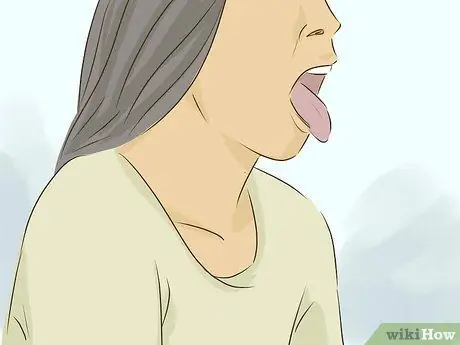
Step 3. Open your mouth and stick your tongue down
After inhaling, open your mouth wide as if you were being examined by a dentist. Stick out the tongue while directing the tip of the tongue down toward the chin.
For maximum results from the exercise, open your eyes wide and then look up as soon as you open your mouth
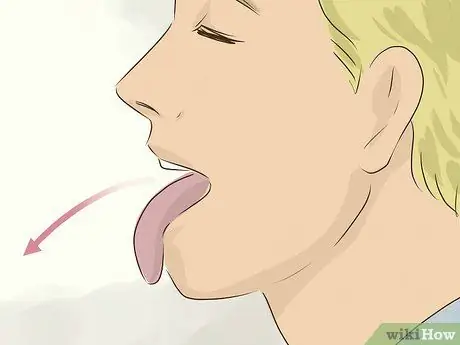
Step 4. Exhale slowly through your mouth
Blow air through the back of your throat so that you hear a "haaaaah" sound while imagining that you want to fog up the mirror by exhaling air from your mouth. At this time, you can feel the contraction of the back of the throat muscles.
Press your palms against your thighs as you exhale
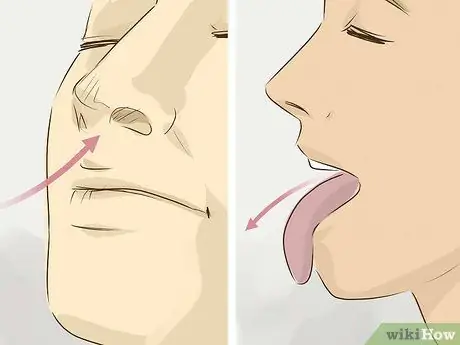
Step 5. Do this exercise 2-3 times
Since exhaling while practicing simhasana breathing is aimed at releasing negative energy, make sure you exert yourself while practicing. So, do this exercise only a few times so you don't run out of energy after practicing.
If you feel dizzy from exhaling hard, rest and breathe normally for a few minutes. Place your palms on your chest to regulate the rhythm of your breath
Tips
- Pranayama practice can be done at any time. This exercise helps you focus your mind before starting your daily activities, calm your mind when you are stressed, increase your energy during exercise, and relax before going to bed at night.
- Dirga breathing exercises (3 parts of the body breath) are very useful if done before going to bed at night.
- All pranayama exercises can reduce stress, but the breath of dirga and simhasana is useful for releasing negative energy when you are under stress.
- The ujjayi breath is very beneficial if you do it while practicing yoga and exercising.
- The more often you practice pranayama, the better your performance will be when exercising. Don't be disappointed if you haven't been able to do that many breath cycles when you're just starting out.
- If you can't concentrate while practicing pranayama, close your eyes or listen to quiet music.
Warning
- If you feel uncomfortable or dizzy while practicing pranayama, stop immediately and return to your normal breathing.
- Kapalabhati breathing should not be performed by people with hypertension, hypotension, heart disease, nosebleeds, and disorders of the eyes (eg glaucoma) or ears.






